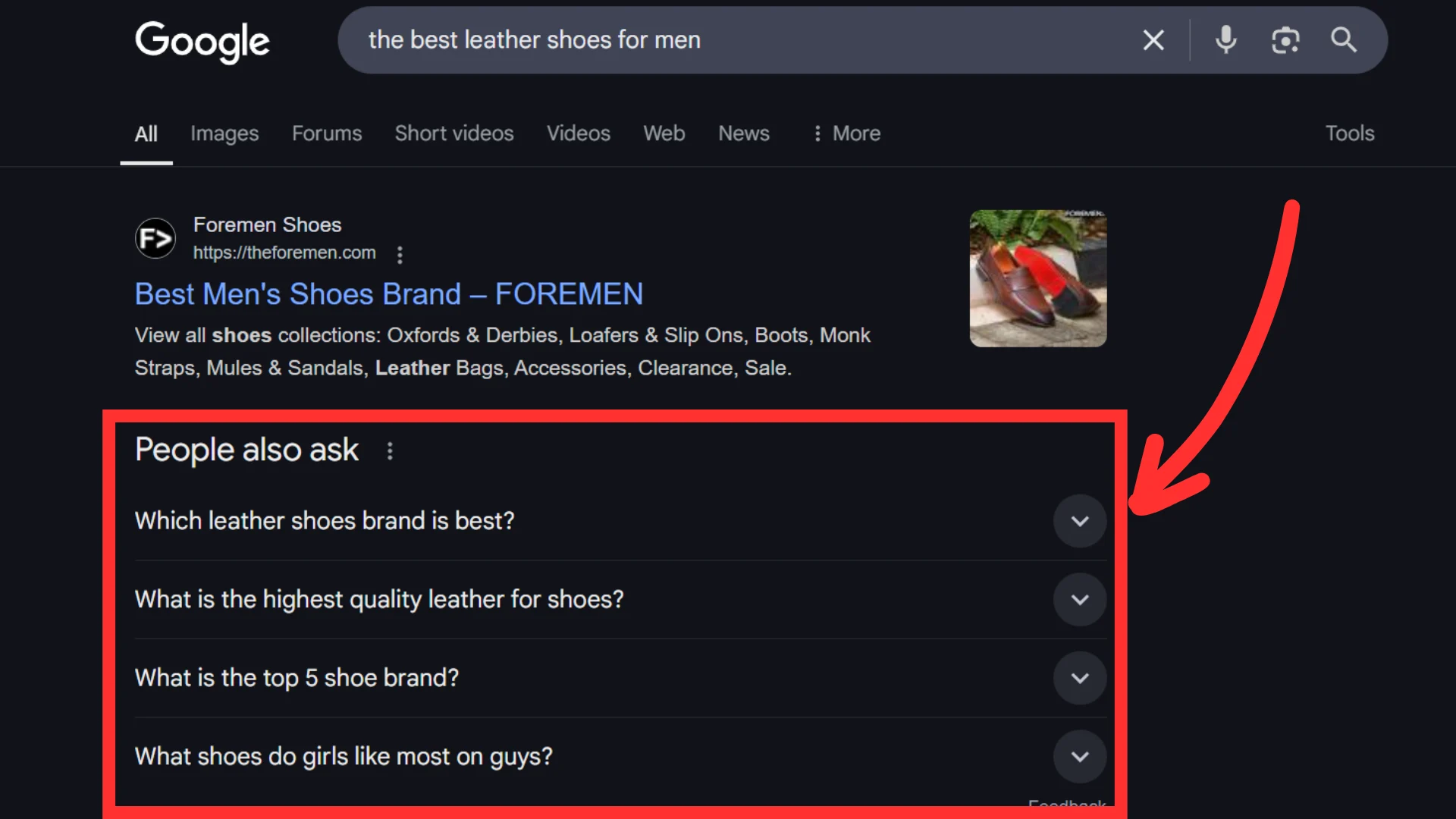How to Create Evergreen Content for Your Affiliate Business: 5 Simple Ways

Evergreen content is the backbone of a smart affiliate marketing strategy. It’s the kind of content that stays relevant, keeps pulling in traffic, and earns commissions long after you hit publish.
Unlike trending topics that fade fast, evergreen content works for months—sometimes years—without losing value.
I’ve been in affiliate marketing years now, and I can tell you: nothing beats content that keeps making money while you sleep. A well-written guide, a solid product comparison, or a resource list can keep ranking on Google, bringing in fresh visitors daily. No constant updates. No chasing trends. Just steady, reliable income.
For example, think about it this way. Someone searching for “how to start a blog” today will likely need the same advice five years from now. If your content is helpful and optimized, it stays on top, bringing in leads and commissions with minimal effort. That’s the power of evergreen content.
In this guide, I’ll break down exactly how to create evergreen content that stands the test of time. You’ll learn how to pick the right topics, structure your content, optimize for search engines, and keep it working for you long-term. Let’s get into it.
Key Takeaways
- Choose topics that stay relevant over time.
- Solve common, ongoing problems in your niche.
- Use keyword research to find high-traffic, low-competition topics.
- Study competitor content and make yours better.
- Write detailed, high-quality content that provides real value.
- Optimize for SEO with strong keywords, meta descriptions, and internal links.
- Promote content through social media, email, and backlinks.
- Regularly update stats, links, and sections to keep it fresh.
- Track performance with Google Search Console and analytics.
- Maintain content to ensure consistent traffic and commissions.
What Makes Content Evergreen?
Evergreen content is content that never goes out of style or simple content that never fades its value. It stays useful and relevant no matter how much time passes. This is the kind of content that keeps bringing in traffic, leads, and commissions for years.
For example, if someone can read your article five years from now and still find it helpful, that’s evergreen. If they land on it and it feels outdated or irrelevant, it’s not.
Examples of Evergreen Content
Some types of content naturally last longer than others. Here are a few solid formats:
- How-to guides – People always want to know how to do something. Whether it’s “How to Start a Blog” or “How to Build an Email List,” these topics don’t expire.
- Resource lists – A collection of tools, websites, or tips that help people with a specific need. Example: “Best SEO Tools for Affiliate Marketers.”
- Case studies – Real-world examples of strategies that work. A case study with strong takeaways stays valuable long after it’s published.
- Beginner’s guides – New people enter every industry all the time. A guide like “Affiliate Marketing for Beginners” never stops being useful.
What’s Not Evergreen?
Some content has a short shelf life. If it depends on trends, news, or seasons, it fades fast.
- News articles – No one cares about an update from last year. News has a short lifespan.
- Trends and fads – What’s hot today is forgotten tomorrow. “Top Marketing Trends for 2024” won’t get clicks in 2025.
- Seasonal content – If something only matters during a certain time of year, it’s not evergreen. “Best Black Friday Deals” won’t be useful in March.
If you want steady traffic and commissions, focus on content that stands the test of time. That’s how you build an affiliate site that keeps working for you long after you hit publish.
1. Choosing Evergreen Topics for Affiliate Marketing
Evergreen content works because people never stop searching for certain things. The goal is to tap into those needs and create something valuable that lasts. Here’s how I do it.
Find Problems People Always Search For
The best topics solve real problems. If someone keeps asking the same question year after year, that’s a goldmine. Think “how to lose weight without exercise” or “best ways to make money online.” These topics don’t expire.
Look at forums, Quora, Reddit, and Facebook groups in your niche. What do people ask over and over? If it’s been a common problem for years, it’s a safe bet it’ll stay relevant.
Another trick: Type a keyword into Google and check the “People also ask” section. That’s Google handing you real, ongoing questions people search for.
Like this;

Use Keyword Research to Validate Ideas
Once you find a solid topic, back it up with data. I use Google Keyword Planner, Ubersuggest, and sometimes KWFinder to check:
- Search volume – Are people actually looking for this?
- Keyword difficulty – Can I rank for it?
- Trends – Has interest stayed steady over time?
- My competitors
If a keyword has decent traffic and isn’t dropping off, it’s worth considering. I also check long-tail variations. For example, “best protein powder” might be competitive, but “best protein powder for beginners” could be an easier win.
Look at Competitor Evergreen Content
No need to reinvent the wheel. Find what’s already ranking and make it better. I look at top-ranking pages and ask:
- How old is this content? Can I update it?
- Is anything missing? Can I add more depth?
- Does it have weak visuals or bad formatting?
I take what works, improve it, and add my own spin. Maybe I include a real-life case study or a personal experience others skipped. That’s how you outrank stale content.
Examples of Strong Evergreen Topics by Niche
To give you an idea, here are topics that stay relevant across different affiliate niches:
- Health & Fitness: “Best home workouts for beginners” / “How to naturally boost energy”
- Finance: “How to save money on groceries” / “Best side hustles that actually pay”
- Tech: “Best budget laptops for students” / “How to speed up a slow computer”
- Beauty & Skincare: “How to get rid of acne naturally” / “Best anti-aging creams that work”
- Online Business: “How to start a blog that makes money” / “Best affiliate programs for beginners”
These topics don’t fade because people will always want to save money, lose weight, look good, and make money.
The key is to pick topics that won’t go stale. Solve a problem, confirm demand, and outdo what’s already out there. That’s how you create content that keeps making money long after you hit publish.
2. Creating High-Quality Evergreen Content
Evergreen content is not only about picking the right topic. It has to be useful, easy to read, and built to last. Otherwise, it fades into the background, and no one bothers to read or share it. Here’s how I make sure my content stays relevant for years.
1. Go Beyond the Basics
Most affiliate content is surface-level. That’s why it doesn’t rank or convert. People land on it, skim for a second, and leave because it’s just rehashed nonsense.
I always ask myself:
- Does this fully answer the question? If not, I dig deeper.
- Would a total beginner understand it? If not, I explain better.
- Does it give people something to act on? If not, I add examples or step-by-step instructions.
- Does it really solve the problem? If not, I make it more relevant.
For example, if I’m writing about “Best Protein Powders,” I don’t just list random options. I explain who each one is best for—beginners, athletes, weight loss, budget shoppers, etc. The more specific and helpful it is, the longer it stays relevant.
2. Make It Easy to Read
Nobody likes reading long, clunky paragraphs. If your content looks like a textbook, people will click away fast. Here’s how I keep mine simple and readable:
- Short sentences. No one enjoys long-winded explanations.
- Clear headings. People should find what they need fast.
- Bullet points for key takeaways.
- A friendly, conversational tone. No one wants to feel like they’re reading an instruction manual.
I write like I’m talking to a friend. If a sentence feels stiff or robotic, I rewrite it.
3. Give Timeless Advice
Evergreen content shouldn’t expire. If it’s full of stats, news, or trend-based advice, it won’t last long. I avoid writing things like:
Bad: “The Instagram algorithm in 2024 prioritizes Reels.” (This will change.)
Good: “Short videos tend to get more engagement than static posts.” (This will always be true.)
If I have to mention something that might change (like Google updates or SEO strategies), I add a quick note:
“SEO evolves, but strong content and good backlinks will always matter. Check [source] for the latest updates.”
This keeps my content fresh and useful without constant rewrites.
4. Keep It Updated Without Rewriting Everything
Even evergreen content needs light maintenance. I check mine every 3-6 months for:
I also add a “Last Updated” date at the top. This tells readers (and Google) that my content is fresh.
High-quality evergreen content isn’t complicated. It’s clear, detailed, and actually helpful. If you solve a real problem and make it easy to read, people will keep coming back. That’s how you create content that ranks, converts, and stands the test of time.
3. Optimizing for SEO to Keep It Ranking
Evergreen content is only useful if people can find it. SEO keeps it visible. Do it right, and your content can pull in traffic for years.
Target Evergreen Keywords with High Search Volume
Some topics never go out of style. Find keywords that people search for year after year. “Best protein powder for beginners” will always be relevant. “Top smartphones of 2023” won’t.
Use tools like Google Keyword Planner, Ubersuggest, and KWFinder to check search volume. The goal is to find steady keywords, not ones that spike and die. If searches have been consistent for years, that’s a good sign.
Optimize On-Page SEO
Google needs clear signals to understand your content. Make sure your title, headers, and meta description match your main keyword.
For example, if your keyword is “best email marketing tools,” your title should be something like:
“Best Email Marketing Tools for 2024 (Tried & Tested)”
Break content into scannable sections using H2s and H3s. Readers and search engines love structure.
Internal linking is another easy win. Link to other related posts on your site. It keeps visitors engaged and helps with rankings. Think of it like building a web of useful content.
Use Structured Data (FAQs, How-To Schema)
Google loves structured data. It helps your content appear in featured snippets and rich results.
If your post answers common questions, add an FAQ section at the end. Google might pull your answers straight into search results. That means free exposure.
Like this;

For step-by-step guides, use How-To schema. This tells search engines that your post explains a process, making it easier to rank for how-to queries.
Update Content Regularly to Stay Fresh
Even evergreen content needs a tune-up. Outdated stats, broken links, and old screenshots hurt rankings.
Set a reminder to check and update your top posts every few months. Refresh any outdated info and add new insights. A simple update can boost rankings without writing a new post.
Google favors fresh, accurate content. If your competitors update theirs and you don’t, they’ll outrank you. Don’t let that happen.
Remember SEO isn’t a one-time thing. It’s an ongoing process. Nail these basics, and your content will keep bringing in traffic long after you hit publish.
4. Promoting Evergreen Content for Maximum Impact
Creating evergreen content is just the first step. If no one sees it, it won’t make you a dime. Here’s how I get my evergreen posts in front of the right people—without constantly pushing them.
1. Share on Social Media and Forums
Social media posts disappear fast, but that doesn’t mean they’re useless. I share my evergreen content multiple times, spaced out over months. New followers won’t have seen it yet, and older ones won’t remember.
Facebook groups, Reddit, and niche forums are goldmines for traffic. I don’t spam links—I join discussions and drop my content when it actually helps. People click when they see value, not when they smell self-promotion.
2. Repurpose into Videos, Podcasts, or Infographics
Some people hate reading. Others prefer visuals. Repurposing my content makes sure I reach both.
I turn blog posts into short YouTube videos, Instagram carousels, TikTok videos and even Twitter threads. If I have a detailed guide, I pull out key points and make an infographic for Pinterest.
Podcasts are another win. I’ve taken my best evergreen posts and talked through them on podcasts (my friend’s). It’s an easy way to reach new audiences without rewriting everything.
3. Build Backlinks to Boost Authority
Google loves evergreen content, but it loves backlinks more. The more sites linking to my post, the higher it ranks.
I use guest posts to build links naturally. I write something valuable for another blog and link back to my evergreen post. That way, I get exposure and SEO benefits.
Another trick? Updating broken links. I find outdated links on high-authority sites, reach out, and suggest my content as a replacement. It works more often than you’d think.
3. Include It in Email Sequences for Passive Traffic
Email marketing is very crucial. Email is traffic I control. If I publish a strong evergreen post, I add it to my autoresponder sequence. Every new subscriber gets it, no matter when they sign up.
Recommended reading: How to Build a Strong Email List for Your Affiliate Marketing Business
I don’t just say, “Hey, read this.” I tell a quick story, highlight a problem, and then drop the link. People are more likely to click when they feel like I’m giving them something useful, not just throwing a blog post at them.
Evergreen content only works if people keep finding it. I don’t let mine sit—I keep sharing, repurposing, and linking to it. That’s how it keeps making money long after I hit publish.
5. Maintaining and Updating Evergreen Content
Evergreen content isn’t “set it and forget it.” If you want it to keep ranking and making money, you have to maintain it. I treat my best-performing content like an asset—it needs regular checkups to stay valuable.
1. Set a Schedule to Refresh Stats, Links, and References
Old stats kill credibility. If you mention “the most popular social media platform in 2022,” update that for 2025. Readers trust fresh data.
Broken links are another issue. If you’re linking to a product or resource, check if it still works. If not, replace it. I go through my top posts every few months, fix broken links, swap out outdated references, and add new, relevant ones.
2. Monitor Performance with Google Search Console and Analytics
I don’t guess which posts need updates—I use data. Google Search Console shows me if a post is losing traffic. If rankings drop, I check why.
Sometimes, a keyword that once brought traffic fades. Maybe new competitors outranked me, or search intent changed. A quick content refresh—adding new info, improving formatting, or answering a new question—can bring it back up.
Google Analytics helps too. If a post has high traffic but low conversions, I tweak the call to action or improve affiliate links. If people bounce too fast, maybe I need clearer headings or a better intro.
3. Add New Sections Based on Industry Updates or Reader Feedback
Industries shift. A post that made sense two years ago might need updates. I keep an eye on trends and tweak my content to stay relevant.
Reader feedback is another important factor. If people keep asking the same question in the comments or emails, I add a section to answer it. That keeps the post useful and improves engagement.
The goal is simple: Keep your content fresh, accurate, and valuable. Do that, and it keeps working for you—bringing traffic, earning commissions, and staying ahead of competitors.
Conclusion
Evergreen content is one of the best assets you can build for your affiliate business. It keeps bringing in traffic, generating commissions, and growing your authority long after you publish it.
The key is to choose the right topics, create high-value content, and keep it updated. If you do that, your content will keep working for you while others chase trends that fade.
Now it’s time to take action. Start creating, optimizing, and promoting your evergreen content today. Need expert guidance? Work with me to build a strategy that drives long-term results.
Frequently Asked Questions
What is evergreen content in affiliate marketing?
Evergreen content stays relevant long after you publish it. Unlike trend-based content that fades, it keeps bringing in traffic and commissions over time. A guide on “How to Start a Blog” will always be useful, while a post about “SEO Trends for 2025” will lose value next year. The key is to focus on topics that solve ongoing problems.
How do I find good evergreen topics?
Look for problems people always search for. If a question has been asked for years, it’s probably evergreen. Use Google Keyword Planner, Ubersuggest, or KWFinder to check search volume and trends. If a keyword has steady traffic over time, it’s a good bet. You can also check competitor blogs and forums to see what topics consistently attract attention.
How often should I update evergreen content?
Even though evergreen content lasts, it still needs updates. Refresh stats, update links, and add new insights every few months. If rankings drop in Google Search Console, it’s time for a refresh. A small update—like adding a new section or replacing outdated info—can help you stay ahead of competitors.
How do I make my evergreen content rank on Google?
Strong SEO makes a difference. Target the right keywords, write clear headings, and use internal links to keep readers engaged. Backlinks from other sites also help boost rankings. The longer your content stays useful and relevant, the better it performs in search results.
How do I promote evergreen content?
Publishing isn’t enough—you have to keep sharing it. Post it on social media, email it to your list, and repurpose it into videos or infographics. Backlinks from other websites can also drive steady traffic. The more ways people find your content, the more valuable it becomes.
Can I use affiliate links in evergreen content?
Yes, but they should fit naturally within the content. Readers don’t like aggressive sales pitches, so focus on providing value first. Check your links regularly to ensure they still work and update them if affiliate programs change. Keeping everything fresh helps maintain trust and conversions.






